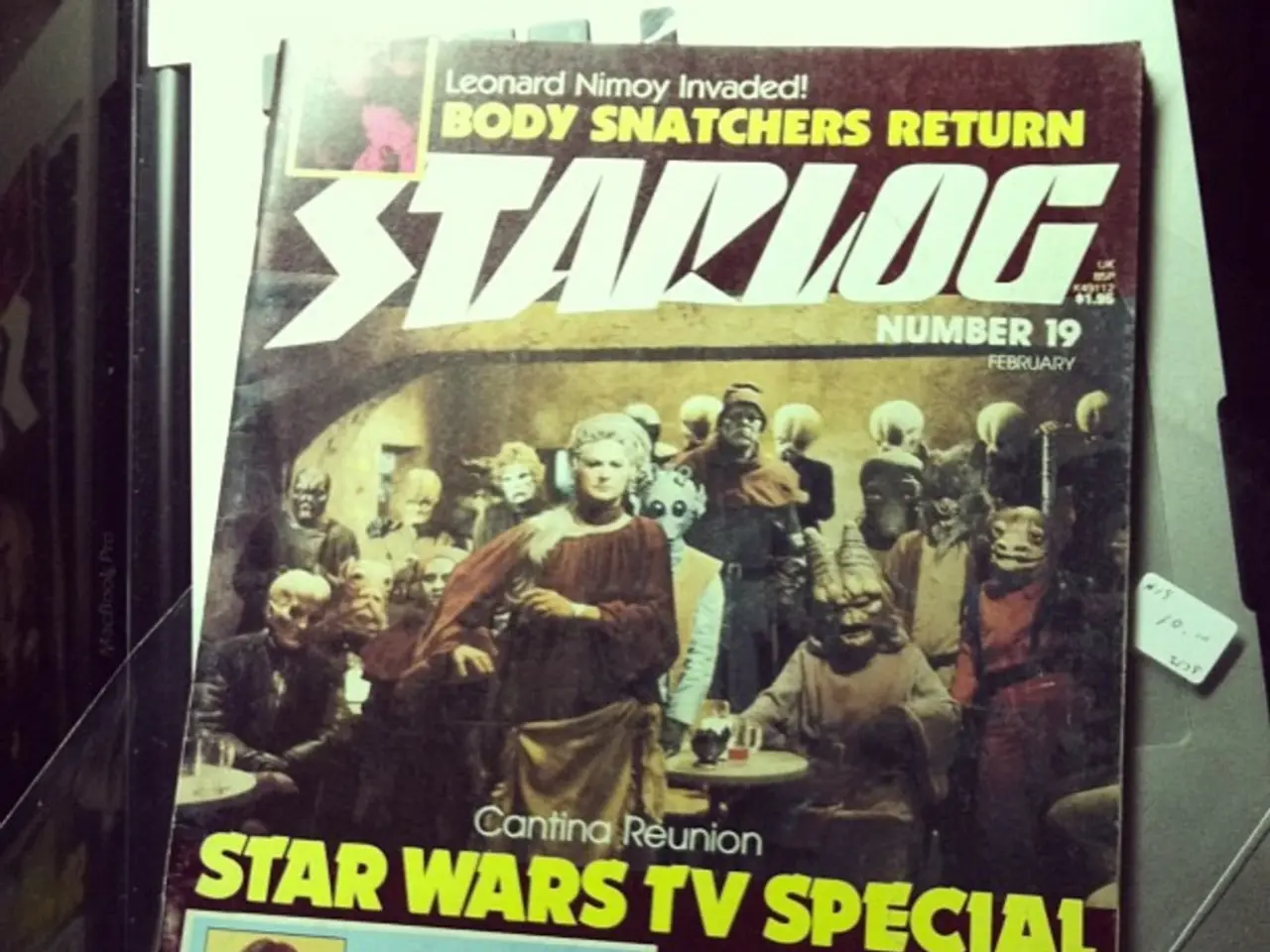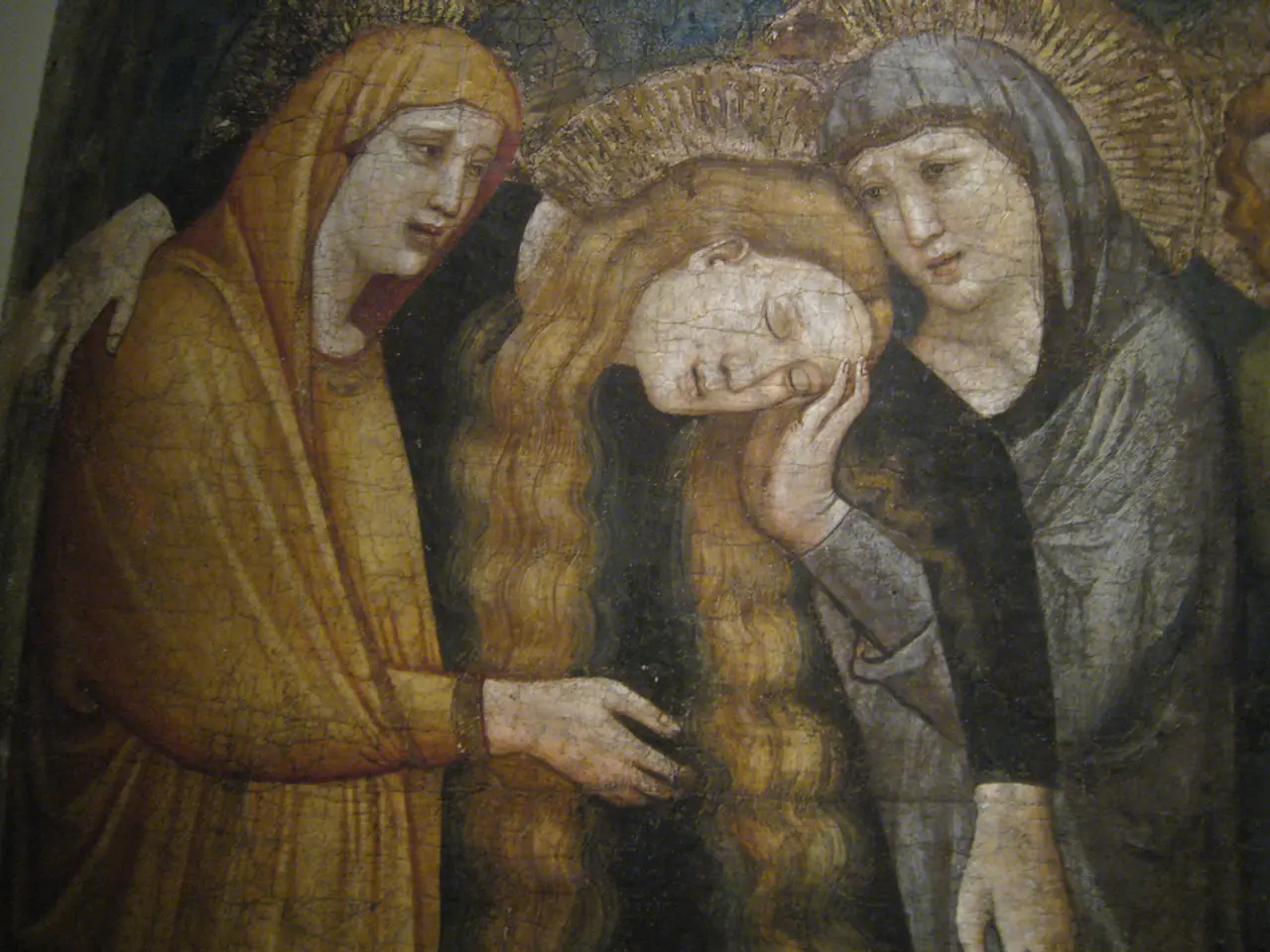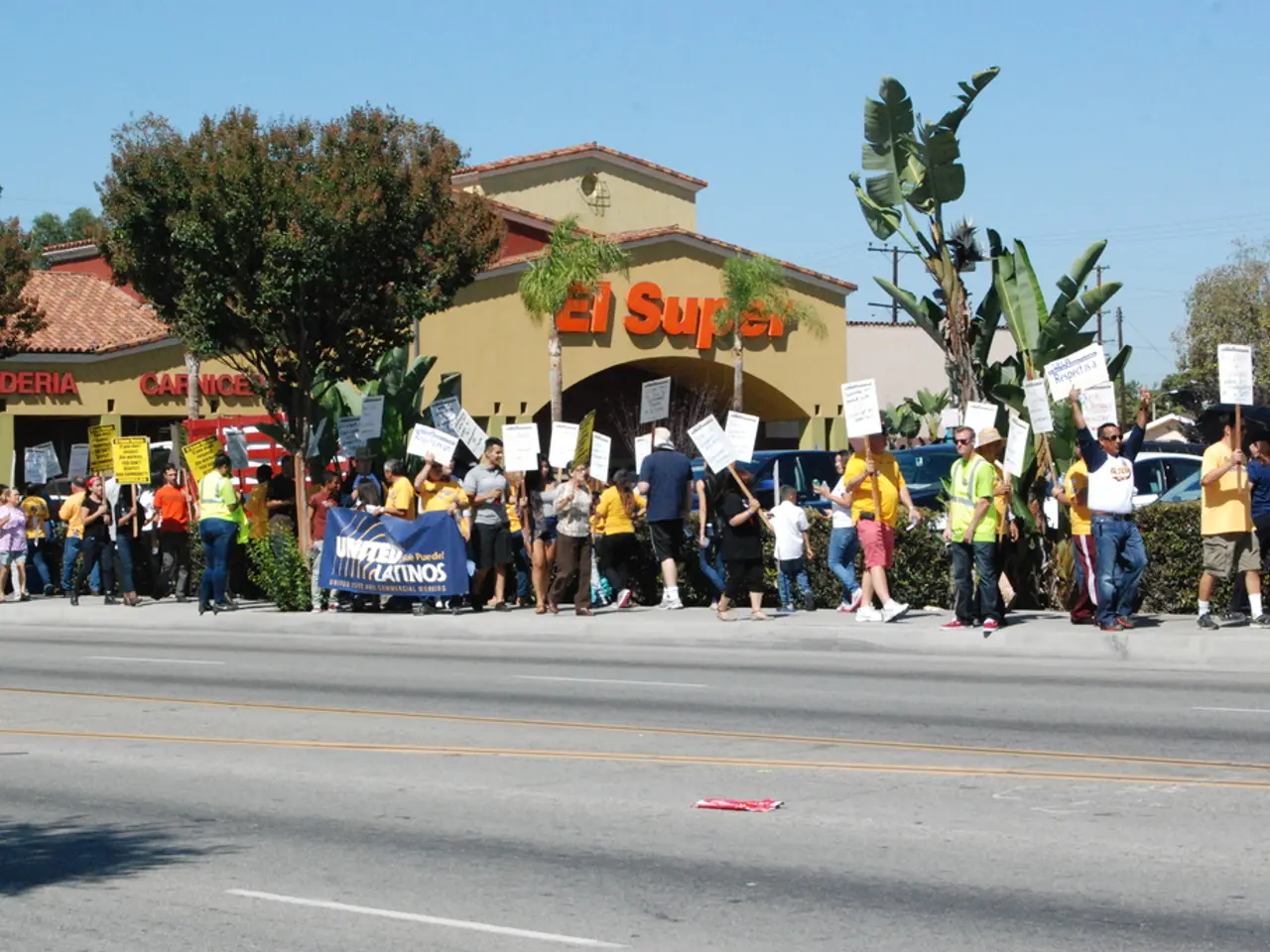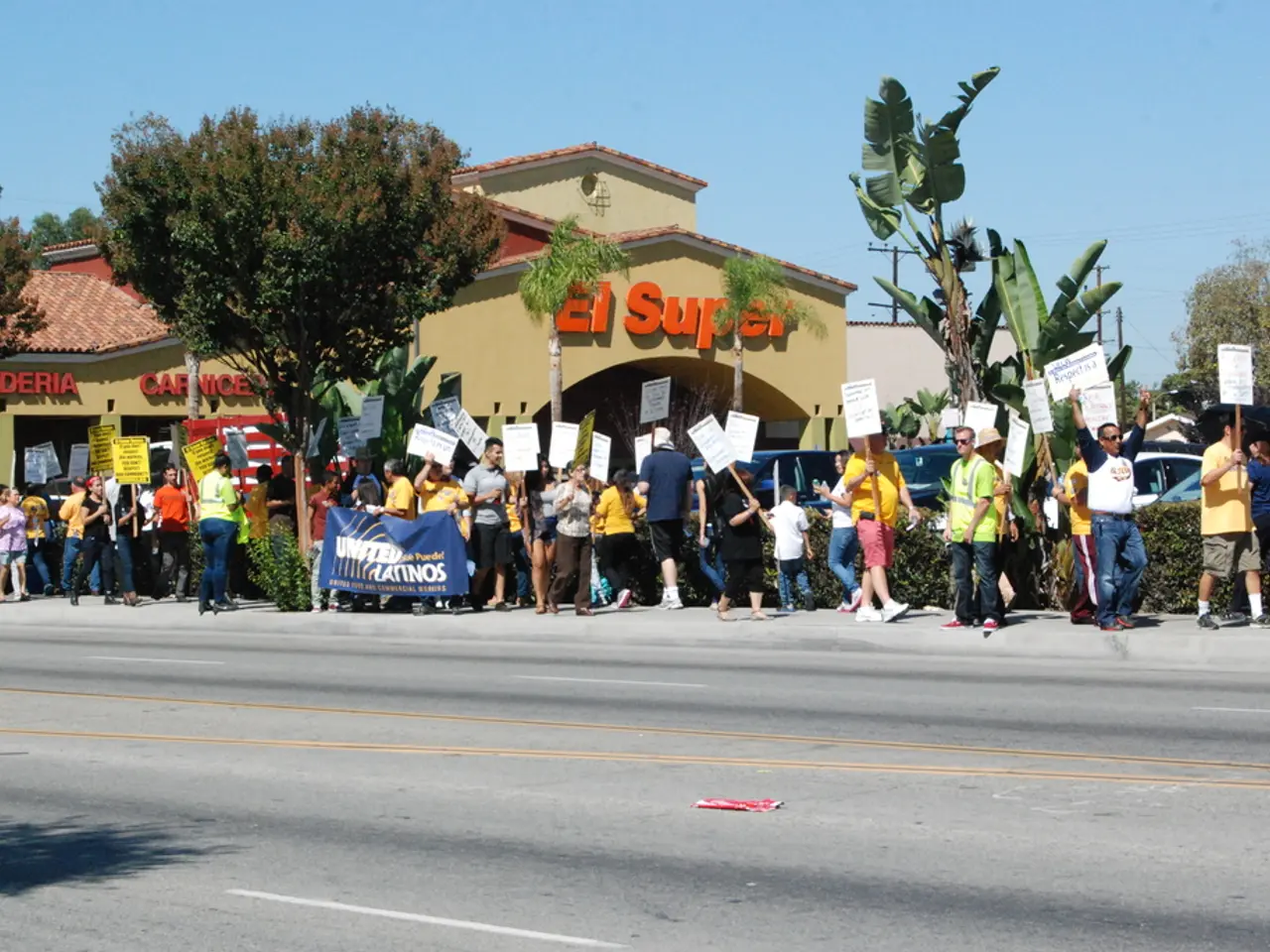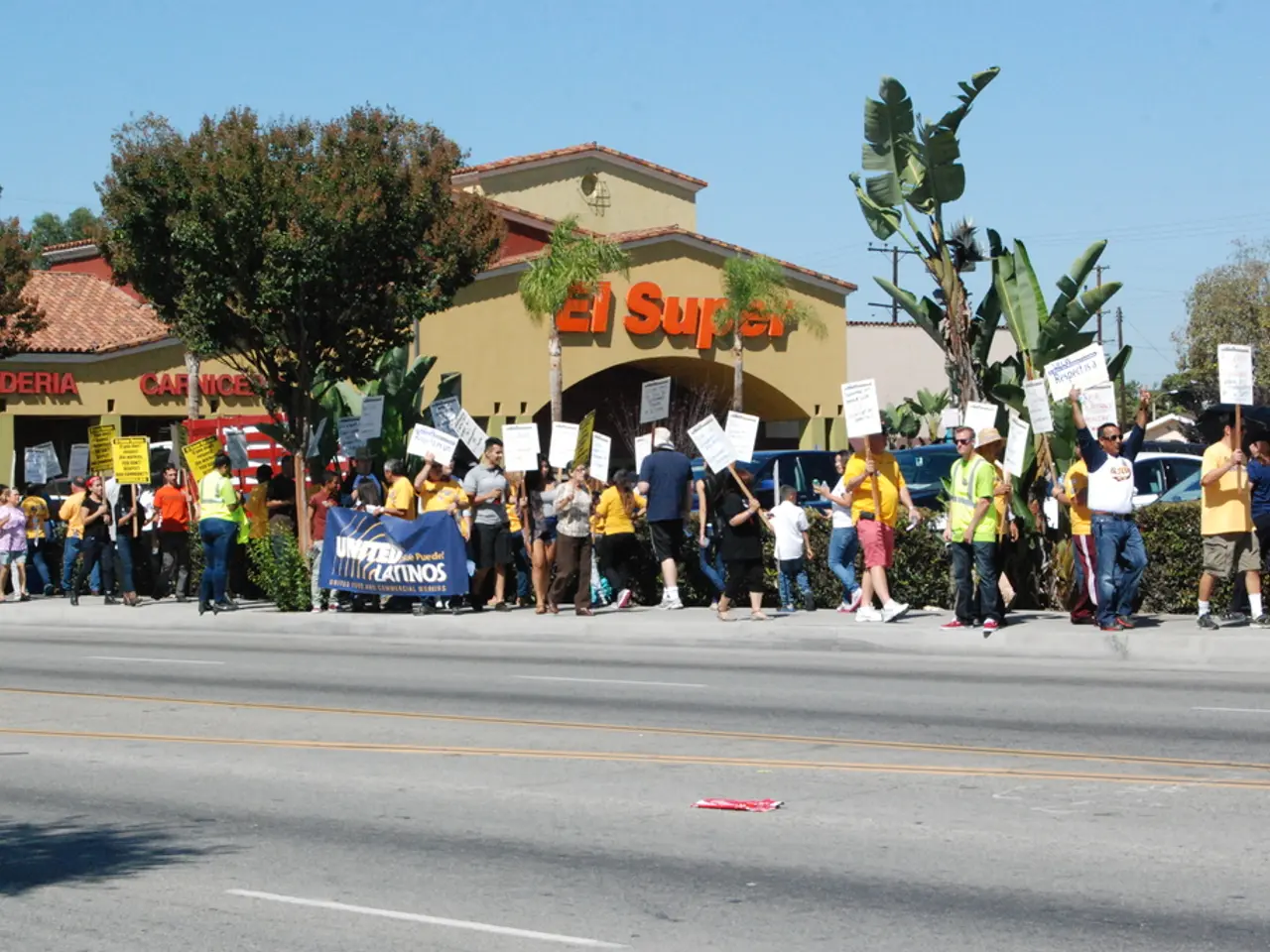"Twenty celebrated lines from well-known Christmas songs"
In the heart of every Christmas celebration lies a rich tapestry of music, woven together from centuries of tradition and cultural exchange. From the hallowed halls of ancient Rome to the bustling streets of 19th-century Europe, the most popular Christmas carols have their roots deeply embedded in Christian liturgical traditions, folk customs, and cultural revivals.
Early Origins
The origins of Christmas music can be traced back to at least the 4th century in Rome, with Latin hymns like Veni redemptor gentium marking the early sacred songs associated with the birth of Christ [1].
Medieval and Renaissance Periods
Some carols or their tunes likely originated in the Middle Ages. For instance, The First Noel may have tunes dating back to the 1200s, although the lyrics were added in the 1800s [2].
18th Century
Many well-known carols emerged or were formalized during this period, such as O Come, All Ye Faithful, which was written by John Francis Wade in 1744, inviting worship and adoration of Christ [4].
19th-Century Victorian Revival
This era ignited a surge in Christmas carol popularity and production in England and beyond. Key works such as Silent Night, O Little Town of Bethlehem, and O Holy Night became widely known. This century saw the collection and publication of many carols, including William Sandys' Christmas Carols Ancient and Modern (1833) and John Stainer’s Christmas Carols New & Old (1871), which helped revive and popularize older carols alongside new ones [1].
Cultural Spread and Adoption
Some carols originated in specific countries and languages—He Is Born, the Divine Christ Child (“Il est né le divin Enfant”) comes from 19th-century France and remains very popular there [5]. Others, like Jingle Bells, though now associated with Christmas, were originally written for Thanksgiving in the 19th-century United States [3].
Caroling Traditions
Public singing of carols was suppressed in some eras but revived notably in England during the Restoration of Charles II in 1660. Later, in 1880, the “Nine Lessons and Carols” service, instituting carols sung in church on Christmas Eve, began at Truro Cathedral, Cornwall, and spread globally [1].
A Blend of Traditions
In summary, most popular Christmas carols originate from a blend of early Christian hymns, medieval folk traditions, and a 19th-century Victorian revival that popularized and standardized many now-classic songs, with contributions from various European countries and cultural adaptations in the Americas. These timeless melodies have the power to bring together all Christmases throughout a person's life.
Iconic Carols
Here are some of the greatest Christmas carols ever written, with their first verses:
- Silent Night: "Silent night, holy night! All is calm, all is bright. Round yon Virgin, Mother and Child."
- O Come, All Ye Faithful: "O come, all ye faithful, joyful and triumphant! O come ye, O come ye, to Bethlehem Come and behold Him Born the King of Angels O come, let us adore Him O come, let us adore Him O come, let us adore Him Christ the Lord!"
- Once in Royal David's City: "Once in Royal David's city Stood a lowly cattle shed, Where a mother laid her Baby In a manger for His bed: Mary was that mother mild, Jesus Christ her little Child."
- O Holy Night: "O holy night, the stars are brightly shining, It is the night of the dear Saviour's birth; Long lay the world in sin and error pining, 'Till he appeared and the soul felt its worth."
- The Twelve Days of Christmas: "On the first day of Christmas, my true love gave to me A partridge in a pear tree."
- While Shepherds Watched Their Flocks: "While shepherds watched their flocks by night, all seated on the ground, the angel of the Lord came down and glory shone around."
- We Three Kings: "We three kings of Orient are; bearing gifts we traverse afar, field and fountain, moor and mountain, following yonder star."
- Ding Dong Merrily on High: "Ding Dong! merrily on high In heav'n the bells are ringing Ding, dong! verily the sky Is riv'n with angel singing Gloria, Hosanna in excelsis"
These carols, with their melodies that echo across generations, continue to be cherished and sung during the festive season, reminding us of the shared history and traditions that bind us together.
Entertainment and music are intrinsic components of Christmas celebrations, as carols represent a rich blend of early Christian hymns, medieval folk traditions, and 19th-century Victorian revival. The iconic carols such as 'Silent Night,' 'O Come, All Ye Faithful,' and 'O Holy Night,' along with others, have their origins traced back to religious, cultural, and historical significance, with some even rooted in specific regions like France and the United States.

